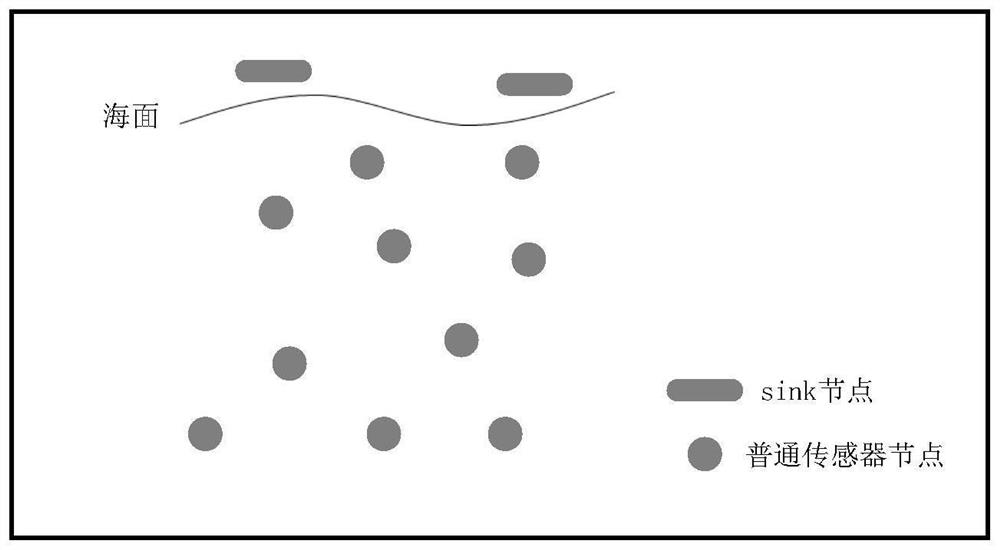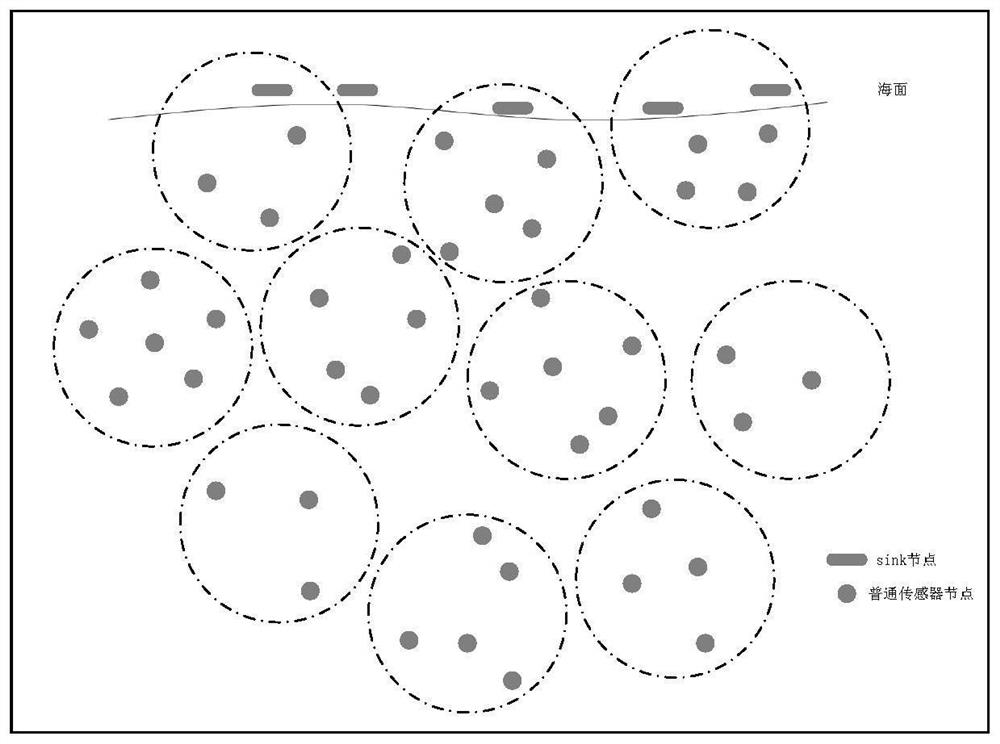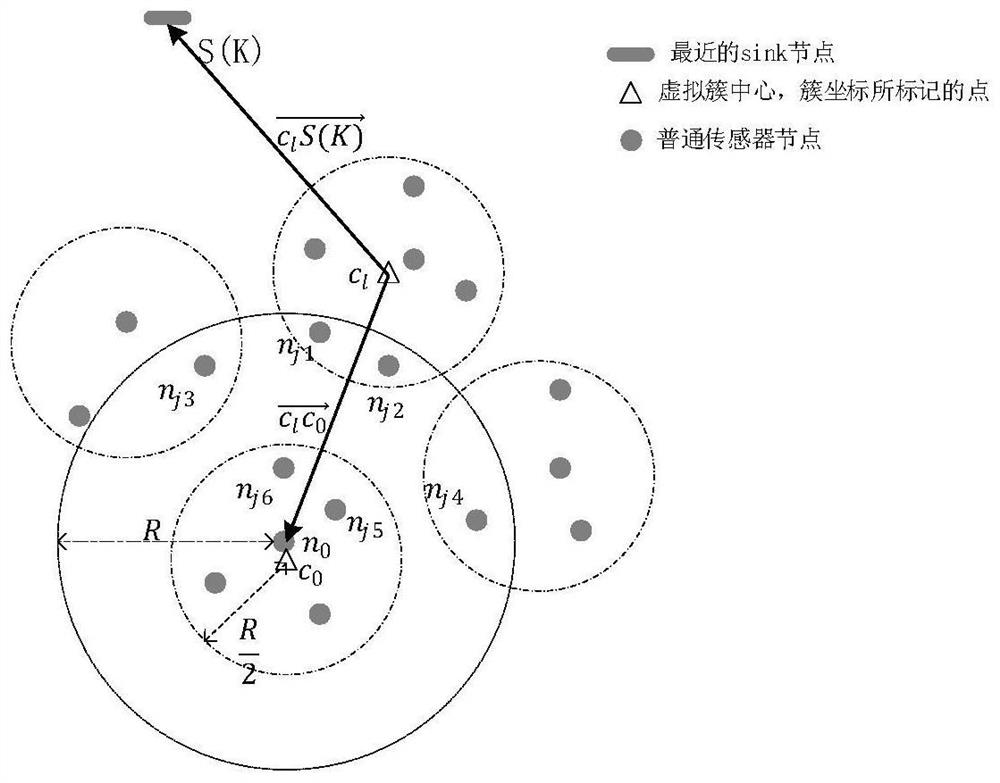Implementation of Opportunistic Routing Protocol for Underwater Acoustic Sensor Networks Based on Cluster Topology
A technology of underwater acoustic sensors and implementation methods, which is applied in the field of routing protocols, can solve problems such as limited bandwidth and node energy, and high control overhead, and achieve the effects of improving network energy utilization, solving hot spots, and overcoming high routing control overhead
- Summary
- Abstract
- Description
- Claims
- Application Information
AI Technical Summary
Problems solved by technology
Method used
Image
Examples
Embodiment Construction
[0079] The present invention will be further described below in conjunction with the accompanying drawings and embodiments.
[0080] Step 1: Determine the network structure.
[0081] figure 1 It is a three-dimensional underwater underwater acoustic sensor network structure. The three-dimensional underwater underwater acoustic sensor network consists of two kinds of nodes: sink nodes randomly deployed in the two-dimensional plane of the water surface and sensor nodes randomly deployed in the underwater three-dimensional space. The sink nodes are equipped with GPS to obtain their own position; the sensor nodes are equipped with different types The sensors collect water information. All sink nodes and sensor nodes are equipped with the same acoustic modem and use underwater acoustic signals for communication; sensor nodes have the ability to generate and relay data packets, and the data packets are transmitted to any sink node through multiple hops, that is, the transmission i...
PUM
 Login to View More
Login to View More Abstract
Description
Claims
Application Information
 Login to View More
Login to View More - R&D
- Intellectual Property
- Life Sciences
- Materials
- Tech Scout
- Unparalleled Data Quality
- Higher Quality Content
- 60% Fewer Hallucinations
Browse by: Latest US Patents, China's latest patents, Technical Efficacy Thesaurus, Application Domain, Technology Topic, Popular Technical Reports.
© 2025 PatSnap. All rights reserved.Legal|Privacy policy|Modern Slavery Act Transparency Statement|Sitemap|About US| Contact US: help@patsnap.com



